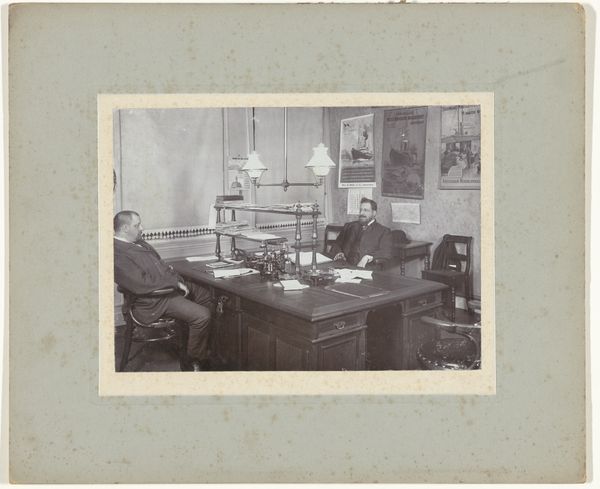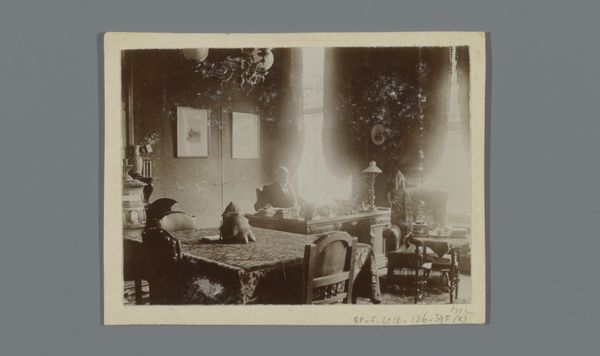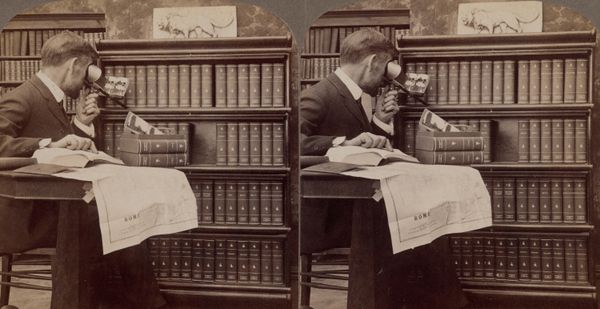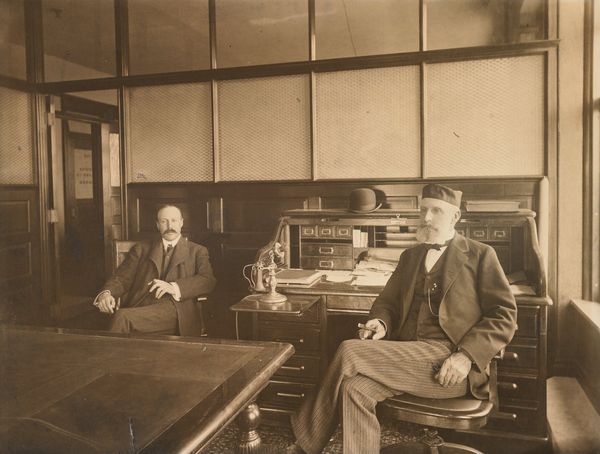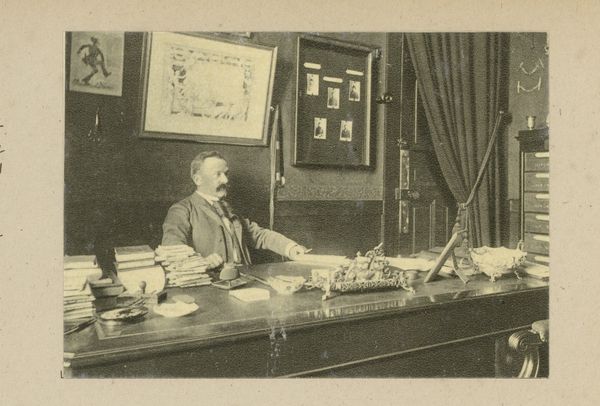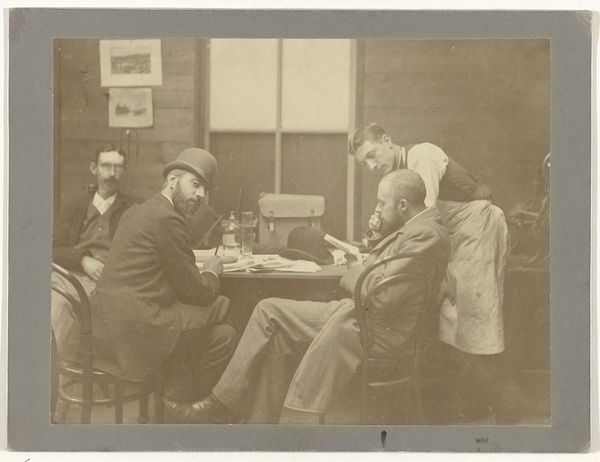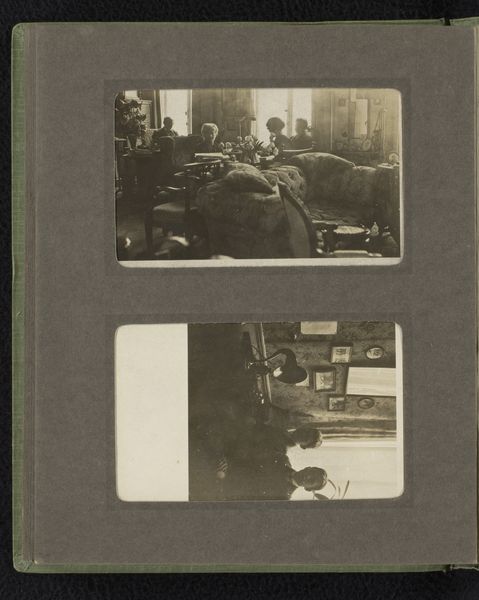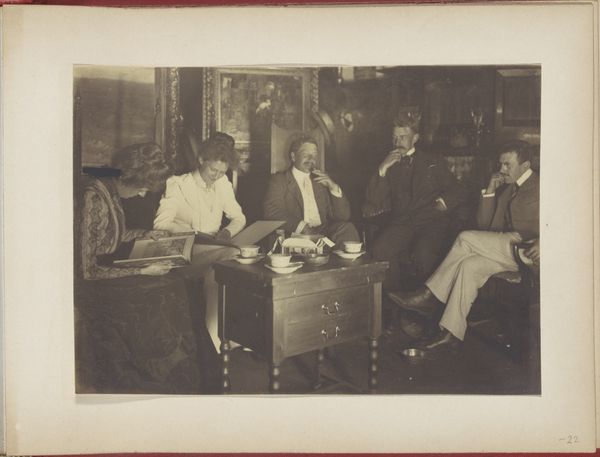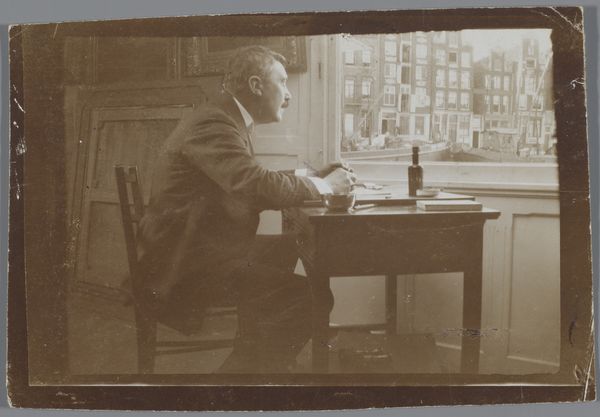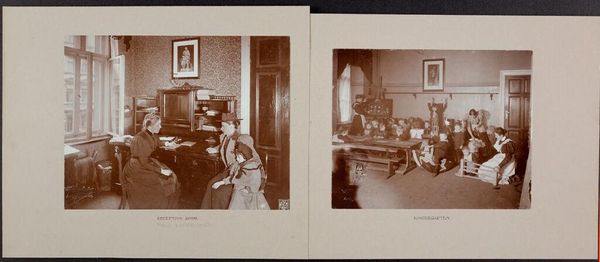
photography, albumen-print
#
portrait
#
16_19th-century
#
photography
#
group-portraits
#
albumen-print
#
realism
Dimensions: image/sheet: 7.7 × 7.9 cm (3 1/16 × 3 1/8 in.) image/sheet: 7.7 × 7.9 cm (3 1/16 × 3 1/8 in.) mount: 8.2 × 17.1 cm (3 1/4 × 6 3/4 in.)
Copyright: National Gallery of Art: CC0 1.0
Curator: What strikes me immediately about this albumen print by Thomas H. Johnson is its sheer austerity. Taken around 1865, and titled "Standard Petroleum Refinery, Pittsburg, Pennsylvania," the atmosphere feels strangely…reserved for a photograph seemingly about industrial progress. Editor: It's quite unsettling, actually. The photograph presents what looks like a board meeting happening above what I understand is a refinery; and these are literally the people calling the shots. What’s striking, thinking in contemporary terms, is the absence of accountability; these gentlemen's lives are disconnected from those most affected by the petroleum industry's implications on our climate, no? Curator: Absolutely. Think about the context: this image comes from the dawn of the oil age. Pittsburg was becoming the center of the petroleum industry, a boomtown fueled by ambition and exploitation, mostly free from regulation. These men, seemingly distanced in the shot, were arguably writing the rules. Editor: Their physical remove echoes the social distance between their decisions and their implications, for sure. Who would these figures be, socially speaking? Because the photo makes the petroleum industry an upper-class social affair; do the suits reveal anything here? Curator: They are clearly men of a certain status. That high collar, for example, it projects status and professionalism. But also a degree of distance: physically there’s very little engagement in the frame, each person sitting, apparently alone, doing their own individual part in a collective whole. They represent a very specific slice of that moment of industrialisation and rapid capitalization of finite, earth resources. Editor: You put your finger right on the strangeness I experienced viewing this piece, it doesn’t feel connected to material existence; just some disembodied decision-makers at a big table who one knows can easily exit out the back after deciding the fate of all others involved. Curator: Exactly! So thinking in terms of class and industrial power, what resonates with me is this capture of the precise moment when power shifts, with a group portrait functioning almost like an archive of this power-class coming into being. Editor: Thinking through these issues of disconnection feels necessary as we look at contemporary social issues. This photo speaks to the role art plays, documenting historical structures that determine so many social patterns playing out today. Curator: For me it's a photograph that really makes you reflect on that relationship between individuals and industries in the way the economic structures consolidate, change, and even stay the same over time.
Comments
No comments
Be the first to comment and join the conversation on the ultimate creative platform.
